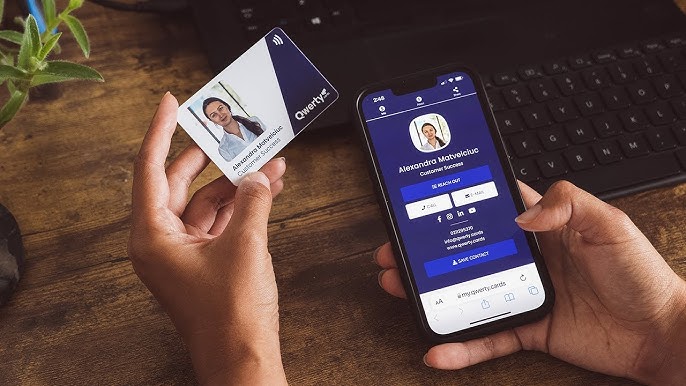Why Digital Business Cards Are the Future of Networking
-
NFC Splash Cards
-
September 6, 2024
Introduction:
In a world where digital communication dominates, traditional paper business cards are becoming increasingly obsolete. Enter digital business cards—a modern, innovative tool that’s transforming how we network and connect professionally. This blog explores why digital business cards are the future, how to create one, and best practices to ensure they make a lasting impact.
1. What Are Digital Business Cards?
Digital business cards are electronic versions of traditional business cards. They can be shared instantly via email, SMS, or QR codes, and can include interactive features such as clickable links, videos, and social media profiles. Unlike paper cards, digital business cards can be updated in real-time, making them a flexible and dynamic networking tool.
2. Benefits of Digital Business Cards
- Environmental Impact: Digital business cards eliminate the need for paper, which helps reduce waste and environmental impact. By making the switch, you contribute to a more sustainable future.
- Cost Efficiency: With digital cards, you avoid the recurring costs of printing and reprinting. Updates can be made easily without additional expenses, making it a cost-effective solution.
- Enhanced Interactivity: Incorporate interactive elements such as clickable links to your website, social media profiles, and online portfolios. This adds a layer of engagement that paper cards cannot offer.
- Instant Updates: Change your contact details, job title, or other information instantly. This ensures that your contacts always have your most current information without the need for new prints.
- Convenience and Accessibility: Share your card through digital channels and access it from any device. This ease of sharing ensures that your contact information is always at your fingertips.
3. How to Create a Digital Business Card
Creating a digital business card involves a few key steps:
- Choose a Platform: Select a digital business card platform that meets your needs. Popular options include HiHello, CamCard, L-Card, and others. Each offers different features and customization options.
- Design Your Card: Customize the design to reflect your personal or company brand. Use your logo, brand colors, and fonts to ensure a professional and cohesive appearance.
- Include Essential Information: Ensure your card includes your name, job title, company, contact details, and links to your website and social media profiles. Consider adding a professional photo or a brief bio for a personal touch.
- Test and Share: Test your digital card on different devices to ensure it displays correctly and all interactive elements function properly. Once you’re satisfied, share your card through your preferred digital channels.
4. Best Practices for Digital Business Cards
- Keep Information Updated: Regularly review and update your digital card to ensure that all information is accurate and current. This helps maintain professionalism and avoids any confusion.
- Personalize Your Card: Tailor your card for different audiences or contexts. For instance, you might adjust the content or links based on the recipient’s industry or interests.
- Use Tracking Features: If your platform offers analytics, use these features to track how often your card is viewed and interacted with. This can provide valuable insights into your networking efforts.
- Follow Up: After sharing your digital card, follow up with a personalized email or message. Reference your meeting or conversation to reinforce the connection and continue the dialogue.
5. Emerging Trends in Digital Business Cards
- CRM Integration: Many digital business cards now integrate with CRM systems, making it easier to manage and track your networking connections.
- Augmented Reality (AR): AR technology is being incorporated into digital business cards, offering interactive and immersive experiences for recipients.
- Blockchain Security: Blockchain is being explored to enhance the security and authenticity of digital business cards, helping to prevent fraud and ensure data integrity.
6. Conclusion
Digital business cards are not just a modern twist on a classic networking tool—they represent the future of professional connections. With their environmental benefits, cost savings, and interactive features, digital business cards offer a superior alternative to traditional paper cards. By embracing this technology, you can streamline your networking efforts, stay ahead in the digital age, and make a lasting impression on your professional contacts.
